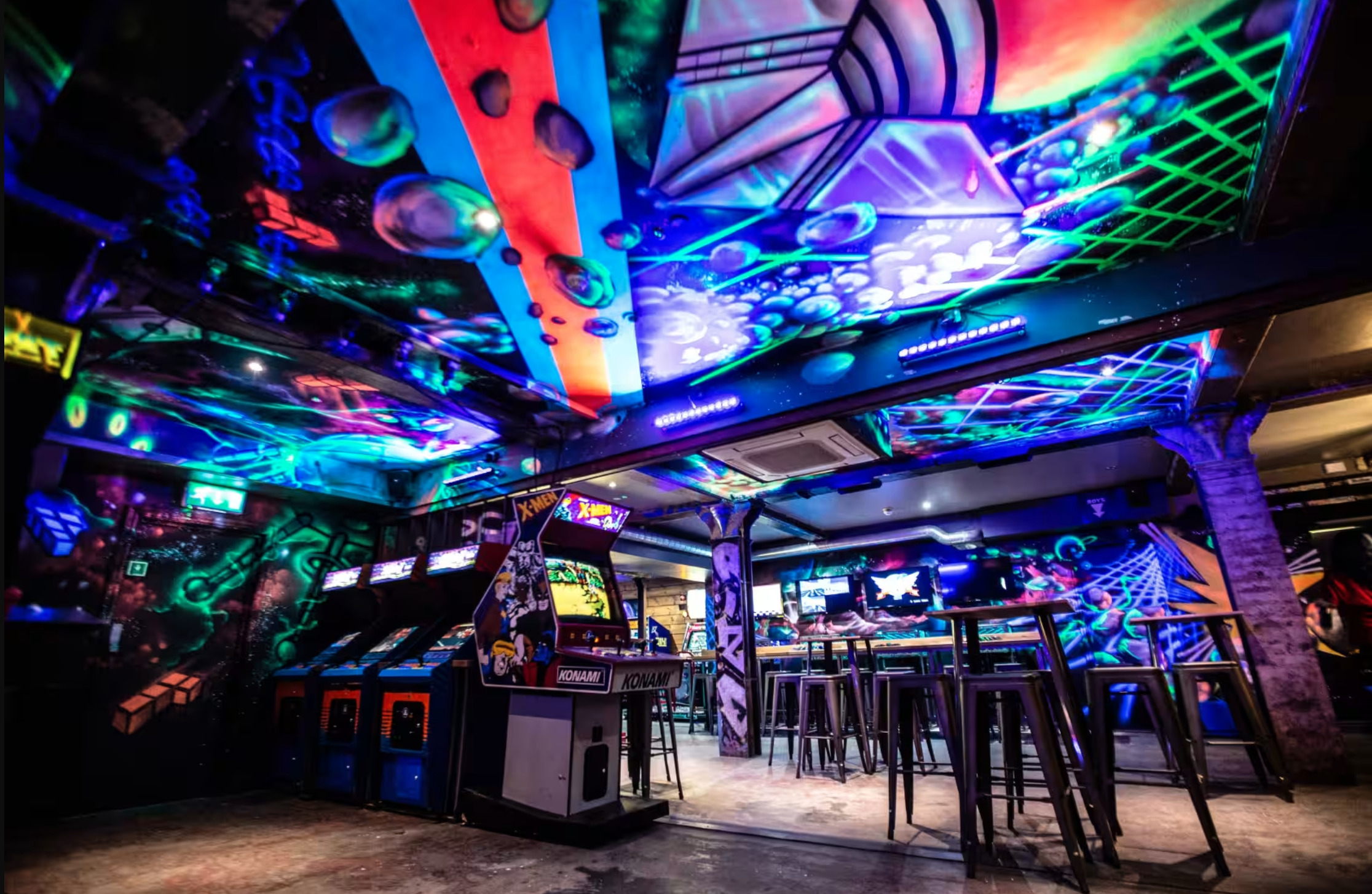How Councils Can Strike the Right Balance in Entertainment and Leisure: Finding the Perfect Mix for Vibrant Towns
In today’s rapidly evolving landscape of leisure and entertainment, councils face the challenge of developing offerings that attract residents and visitors while avoiding over-saturation.
With the rise of immersive experiential attractions, traditional leisure activities, and growing consumer demand for memorable, interactive experiences, it is essential for local authorities to strike the right balance.
Understanding the right mix of offerings can transform a town’s appeal, driving economic growth and fostering community engagement without overwhelming the local market.
Here are key considerations for councils looking to create a thriving leisure landscape that strikes this balance.
1. Assessing Local Demand and Audience Preferences
The first step in determining the right mix of entertainment and leisure offerings is to understand the local market. Every town has a unique demographic and visitor base, and councils must take the time to assess what types of experiences will resonate most with these groups.
- Engage with the Community: Councils can run surveys, host focus groups, or engage through public forums to gather feedback from residents. Understanding what experiences locals are seeking—whether immersive entertainment, family-friendly activities, or traditional leisure such as parks and cinemas—provides invaluable insight into community desires.
- Analyse Visitor Data: For towns with a strong tourist presence, it is essential to understand what draws people to the area. Councils should evaluate tourism trends, spending habits, and preferences of different age groups to determine the types of experiences that visitors are most interested in.
- Monitor Industry Trends: While immersive experiences such as escape rooms, augmented reality tours, and art installations are gaining traction globally, traditional leisure like bowling, cinemas, and sports facilities still hold appeal. Understanding emerging trends in both realms helps councils make informed decisions on what to introduce or expand.
By developing a comprehensive understanding of the town’s audience – residents and visitors alike – councils can prioritise investments that are more likely to succeed.
2. Identifying Gaps in Current Offerings
An in-depth audit of existing entertainment and leisure options is critical. This helps councils to identify gaps in the market, potential areas for development, and where over-saturation could become an issue.
- Conduct a Leisure Audit: Catalog the current landscape of traditional and immersive offerings. Assess whether there are enough experiences to appeal to different demographics—families, teenagers, retirees, young professionals, and tourists.
- Compare Nearby Towns: Consider the competitive landscape and what neighbouring towns offer. It’s important for councils to avoid duplication of nearby offerings. If a neighbouring town already has a popular immersive attraction or major cinema chain, consider focusing on experiences that are missing or underrepresented.
- Review Accessibility and Inclusivity: Accessibility is a critical factor in leisure planning. Make sure the available offerings cater to a wide range of abilities, ages, and backgrounds. Experiences that are inclusive can draw larger, more diverse audiences and reflect the town’s commitment to community welfare.
This strategic audit helps councils develop offerings that complement what already exists and ensures resources are allocated efficiently, reducing the risk of creating redundant attractions.
3. Blending Immersive and Traditional Offerings
Finding the right balance between immersive experiences and traditional leisure is essential for councils aiming to attract diverse audiences. Over-investing in one type of entertainment may alienate certain segments of the population or result in over-saturation, while under-investing could lead to missed opportunities in attracting tourism and investment.
Create a Holistic Leisure Ecosystem: Rather than prioritising one form of entertainment over another, councils should strive for a mix that meets different needs. For example, a town could combine immersive experiences, such as virtual reality-based attractions, with more traditional leisure like parks, cinemas, and sports facilities. This provides visitors with a variety of options, encouraging longer stays and increased spending across the town.
Consider Multi-Purpose Venues: One way to avoid over-saturation while providing a diversity of entertainment is to develop multi-purpose venues. These spaces can host a wide variety of events – ranging from immersive art exhibits and pop-up markets to live performances and community events. Rotating experiences keep venues fresh, while multi-functionality ensures they appeal to a broad audience.
Layer Immersive Elements into Traditional Settings: Integrating immersive technology or interactive experiences into traditional spaces can enhance appeal without fully replacing familiar activities. For example, adding augmented reality elements to a park or historical site can offer new ways to engage with the space, while keeping the core leisure activity accessible to all.
4. Mitigating the Risk of Over-Saturation
Over-saturation can occur when there is too much of a particular offering in one area, leading to reduced demand and loss of interest. For councils, the goal is to develop a sustainable mix of experiences without overwhelming the local market.
- Space Out Developments: If there is an influx of new experiential entertainment projects, councils should carefully manage the timeline for implementation. Staggering openings of new attractions over several years can sustain excitement and prevent market fatigue.
- Monitor Performance Closely: Once new attractions open, councils should keep track of performance metrics, such as footfall, revenue, and customer feedback. If certain experiences start to lose traction, adjustments can be made quickly—whether through marketing campaigns, programming changes, or offering new experiences.
- Encourage Collaboration Between Operators: Councils can help prevent over-saturation by fostering collaboration between businesses and operators. For example, encouraging joint events or festivals that combine different entertainment offerings can attract larger crowds without overwhelming any single venue. This collaboration can also create opportunities for local businesses to benefit from increased foot traffic.
5. Supporting Local Businesses and Talent
Immersive entertainment often thrives when it taps into local culture, history, and creative talent. Councils can help cultivate a thriving leisure economy by engaging local creators and businesses to develop experiences that resonate with both residents and tourists.
Incorporate Local Creatives: Collaborating with local artists, writers, and technologists to design immersive experiences rooted in local culture can create unique attractions that stand out from chain or franchise operations. This not only helps differentiate the town but also provides local talent with opportunities for growth.
Support Independent Venues and Startups: By offering incentives or financial support, councils can encourage the development of independent entertainment ventures. These can be pop-up events, smaller immersive experiences, or community-driven projects. Supporting grassroots projects adds to the town’s cultural appeal and prevents reliance on larger, corporate offerings.
6. Long-Term Sustainability and Community Engagement
Creating a successful entertainment and leisure mix isn’t just about attracting tourists; it’s about fostering a sustainable environment that benefits the local community in the long term.
Focus on Sustainable Development: Consider the environmental impact of new leisure developments. Councils should prioritise green spaces, energy-efficient venues, and eco-friendly attractions. Sustainability is increasingly important to residents and visitors, and incorporating eco-conscious practices can enhance a town’s appeal.
Engage the Community in Decision-Making: To ensure long-term success, councils should involve the community in decisions about entertainment offerings. Regular feedback, public consultations, and town halls help ensure that residents feel heard and that developments reflect the desires of the people who live there.
Conclusion: A Thoughtful, Balanced Approach
Councils have the potential to create vibrant, attractive towns through the right mix of immersive, experiential offerings and traditional leisure activities. The key is to be strategic: understanding local needs, avoiding over-saturation, and fostering an ecosystem where both innovative and classic leisure options can thrive side by side. By engaging the community, supporting local talent, and continually monitoring the landscape, councils can build a sustainable, dynamic leisure economy that draws both residents and visitors, now and in the future.



